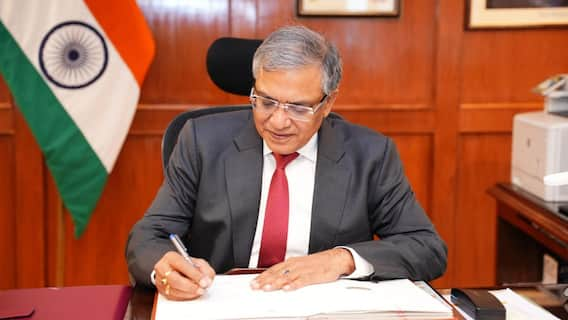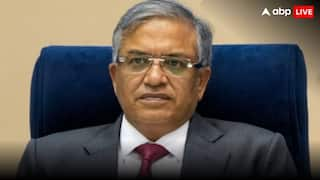Explorer
Ladakh Standoff: Chinese Army Pulls Back Troops In Galwan Valley As NSA Ajit Doval Jumps Into Action
India-China Tensions: China's People's Liberation Army was seen removing tents and structures at patrolling point 14 and a rearward movement of vehicles of Chinese troops was seen in the general area of Galwan

National Security Advisor Ajit Doval. (File Photo/ AFP)
New Delhi: In what might come as a first sight of relief amid the ongoing India-China border standoff, the Chinese Army has pulled back its tents and troops by 1.5 kilometres from the location soon after India's National Security Advisor Ajit Doval jumped into action and spoke to Chinese foreign minister Wang Yi. ALSO READ | India Bans Import Of Power Equipment From Pakistan And China; 'Won't Tolerate Any Transgression'
As per reports, NSA Doval held a two-hour long video call with Yi on Sunday post which the deescalation was witnessed in Ladakh's Galwan Valley after weeks-long standoff.
Ministry of External Affairs (MEA), in a statement, said that the two representatives had a frank and in-depth exchange of views on the recent developments in the Western Sector of the India-China border areas.
"They (NSA Doval and Yi) re-affirmed that both sides should strictly respect and observe the Line of Actual Control (LAC) and should not take any unilateral action to alter the status quo and work together to avoid any incident in the future that could disturb peace and tranquillity in border areas," MEA statement said.
ALSO READ | Rahul Gandhi Says 'Covid-19 Will Be Case Study Of Failure In Harvard'; JP Nadda Hits Back
"It was also agreed that NSA Ajit Doval & Chinese FM Wang Yi will continue their conversations to ensure full and enduring restoration of peace and tranquillity in the India-China border areas in accordance with the bilateral agreements and protocols," it added.
The Chinese Army has moved back its tents and troops by 1.5 kilometres from the locations in Galwan Valley where disengagement was agreed upon after several rounds of Corps Commander level talks between the two sides. While there is no official confirmation from the Indian Army, sources have confirmed that the move has been taken under the disengagement agreement.
As per sources cited by ANI, Chinese heavy armoured vehicles are still present in depth areas in Galwan river area.
China's People's Liberation Army was seen removing tents and structures at patrolling point 14 and a rearward movement of vehicles of Chinese troops was seen in the general area of Galwan and Gogra Hot Springs. However, It is not immediately known whether the de-escalation initiative has also been started in the Pangong Tso area where the Chinese side has significantly enhanced its presence, particularly in areas between Finger 4 and Finger 8.
ALSO READ Kuwait's Expat Quota Bill: 8 Lakh Indians To Face Ouster After Bill Gets Approved | Know How & Why
Earlier, it was believed that the retreating of troops could either be under disengagement effort or due to the strong current in Galwan river. However, later sources said that it was a part of the disengagement initiative. This could be a turning point and lead to de-escalation of tensions between the two neighours, which has been continuing for over months now.
Indian Army has not yet given an official statement on whether China has started its retreat from the flashpoints under the agreement of June 30 military level meeting, and is monitoring the situation with caution.
China & India have made progress on June 30 talks: Chinese foreign ministry
China and India have made progress coming up with effective measures for frontline troops to disengage and de-escalate the border situation at the 3rd commander-level talks between the two militaries on June 30, China's Global Times quoted the Chinese Foreign Ministry spokesperson Zhao Lijian, as troops moved back in Galwan.
The third round of Corps Commander-level meeting between armies of India and China on June 30 went on for 12 hours, said Army sources on July 1. The first two rounds had taken place in Moldo on the Chinese side of the Line of Actual Control (LAC).
WATCH | Galwan Valley: Chinese troops start de-escalation process | Ground Report
In the second round of Corps Commander-level talks held on June 22, both sides reached a mutual consensus to disengage in the Eastern Ladakh sector. The military commanders from both countries had met initially on June 6 and agreed to disengage at multiple locations. India had asked the Chinese side to return to pre-May 4 military positions along the LAC.
The June 6 talks got derailed after the June 15 Galwan Valley clash in which 20 Indian soldiers were killed as Chinese side unilaterally tried to disturb the status quo along the Line of Actual Control.
Weeks after the clash, on Friday, Prime Minister Narendra Modi paid a surprise visit to the tensed region of Ladakh. He interacted with soldiers at forward post of Nimmoo in Leh.
Prime Minister Modi in an indirect message to China said that India is the era of expansionism is over and that the history is proof that "expansionists" have either lost or perished.
Follow Breaking News on ABP Live for more latest stories and trending topics. Watch breaking news and top headlines online on ABP News LIVE TV
View More
Advertisement

Don't Miss Out
00
Hours
00
Minutes
00
Seconds
Trending News
Advertisement
Advertisement
Top Headlines
India
India
Cities
World
Advertisement


Prosenjit NathThe writer is a technocrat, political analyst, and author.
Opinion









































